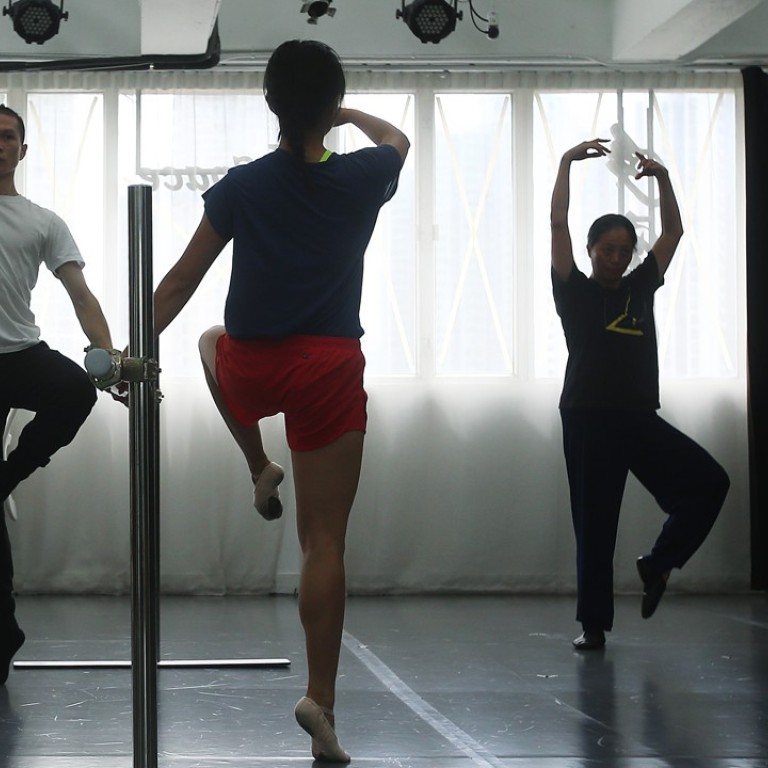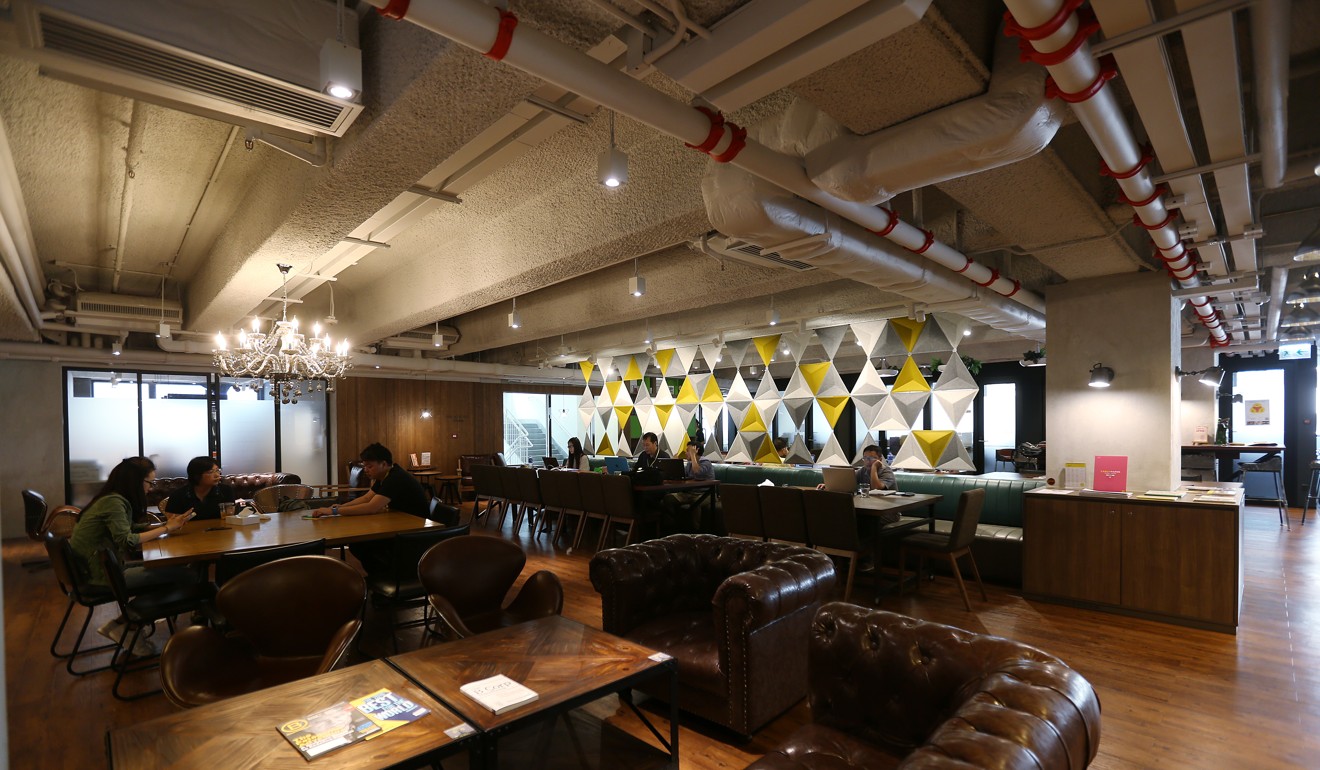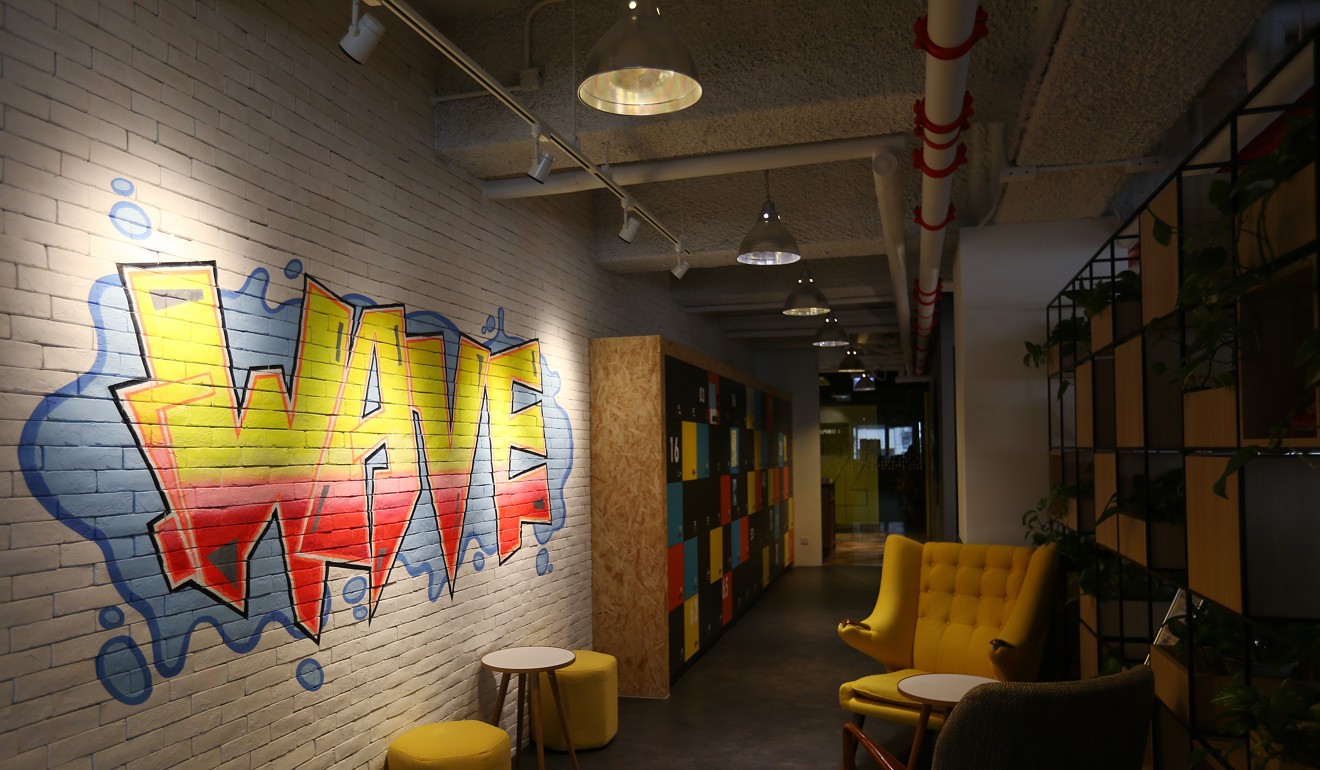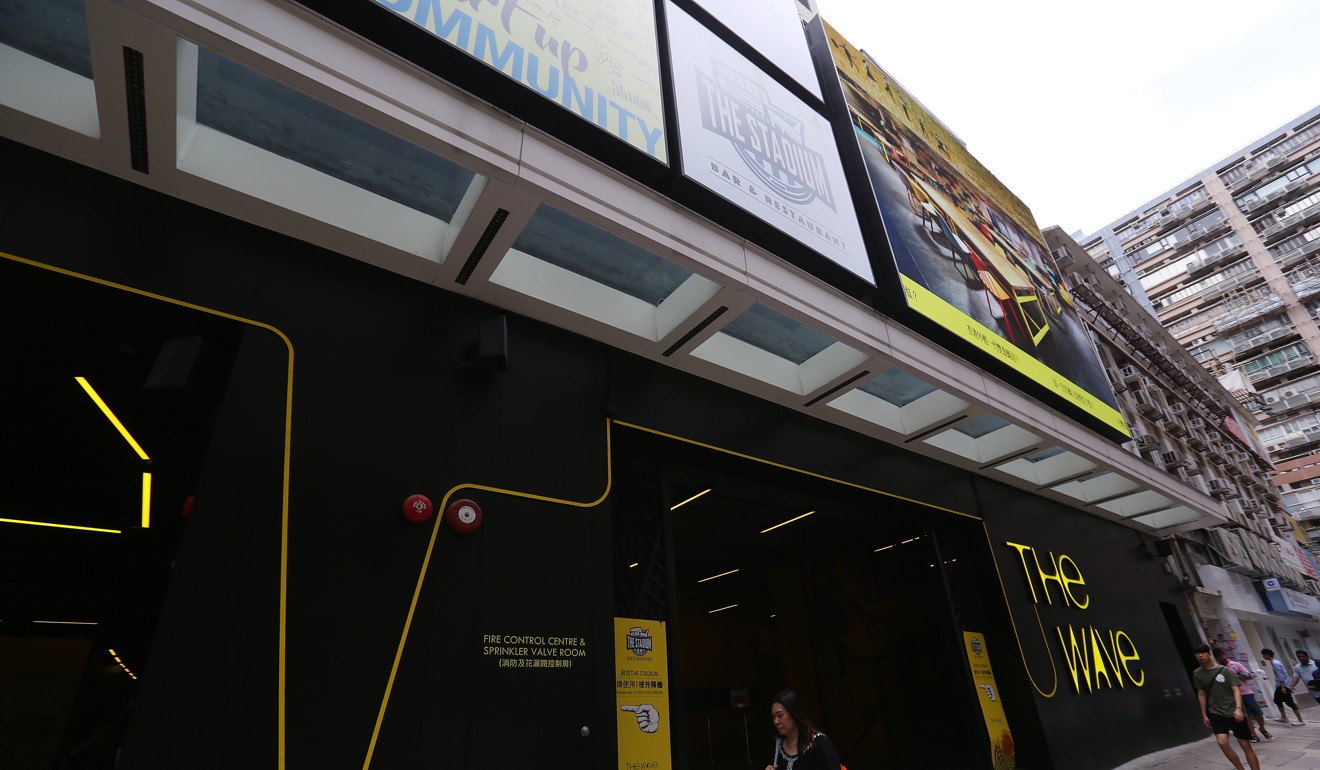
Small businesses and arts groups flee from high rents ... only to end up in potential death traps in Hong Kong
After recent deadly fires, the government is looking to address problem and last week Carrie Lam announced series of plans, including revival of scheme to make it cheaper to refurbish the buildings for other purposes – which could leave the small businesses and arts communities homeless
Dance troupe Y-Space receives government funding but more than anything, it dreads a knock from officialdom on its studio doors.
Whenever it is told of a pending visit, the dancers scramble into a madcap routine and all the leaping and flying their ballet training gave them are put to pull off a ruse.
The dance floor and the bright-lit studio would be transformed into a plain workshop with desks and sewing machines.
The two co-founders would even corral friends into acting as workers, sitting at the desks pretending to be manufacturing costumes.
It is a matter of survival. The lands authorities want them out of their venue but they have nowhere else to go.
“It’s really ironic that we are subsidised by the Arts Development Council, a government-funded body, but it’s the same government that wants to cast us out of where we do what we are subsidised for,” co-founder Victor Ma Choi-wo says.
Like Y-Space, which operates in a 37-year-old industrial building in Kwai Chung, many arts and sports groups, non-industrial businesses and even residents call Hong Kong’s 1,400 factory buildings home.
Fresh crackdown
To address both safety concerns and demand for space by different groups, Chief Executive Carrie Lam Cheng Yuet-ngor last week announced a series of plans, including the revival of a scheme to make it cheaper to refurbish these buildings for other purposes.

But the scheme had in the past languished with few applications and increasing criticism of the accompanying gentrification and rent hikes.
Industrial building owners and tenants want something different this time. Owners expect a streamlined application procedure, while tenants urge for affordable spaces for them to survive, inviting the government to consider if there is a way to give the term industry in the old land leases a new meaning.
“Industrial buildings are our only option,” Ma says.
Put to creative use
Although there is no official record on the number of industrial building tenants not following the land use, many outspoken ones come from the creative industry.
For arts and sports groups like Y-Space particularly, industrial buildings are a perfect match in space-starved Hong Kong.
“We see many possibilities in industrial buildings,” Ma says. “They have large spaces and high ceiling, which is ideal for practising dance. They are relatively cheap, and many artists in Hong Kong can barely make ends meet. They are not in residential areas, so bands can practise without causing nuisance to others.”
Y-Space rents their 1,800sq ft studio for around HK$18,000 a month, or HK$10 per sq ft, while property agency advertisements show that commercial buildings in the same area ask for at least double the price.
Jason Chan, co-founder of a creative design studio in an industrial building in Kwun Tong, says the company needs affordable space for storing its large photo and video shooting equipment.
“We enjoy more room and freedom here,” Chan says.

He declined to disclose the name of the company or the building, fearing crackdowns.
The spacious units were once left vacant since the late 1980s, as the manufacturing industries gradually moved to mainland China or Southeast Asian countries for cheaper labour. As a result, poor families and a vast variety of operations such as restaurants, handicrafts workshops, tutorial centres, bands, martial arts clubs and shops moved in amid booms of residential and commercial property prices.
But sometimes they wind up in warehouses, often unaware that the buildings are used for storing hazardous goods.
Making matters worse
Adding to the risk is that 481 industrial buildings across the city were built in 1973, or are at least 44 years old, before the government required these buildings to install modern fire-safety facilities such as an automatic sprinkler system or certified fire-resistant doors.
To make things worse, some landlords illegally subdivide their properties into several smaller units to make more profit, creating a crowded environment, but very few of them are willing to invest in fire-resistant equipments.
In June last year, a fire raged for 108 hours through the 66-year-old Amoycan Industrial Centre in Kowloon Bay, killing two firefighters. The building was a mini-storage warehouse divided into more than 200 mini-storage units. There was also a church in the building.
Hong Kong mini-storage operators act on fewer than 5pc of fire abatement notices
This month, a fire broke in a subdivided unit in the 45-year-old Mai Sik Industrial Building in Kwai Chung, killing three people.
“The hidden problems of industrial buildings have plagued Hong Kong a great deal,” Chief Executive Carrie Lam Cheng Yuet-ngor said last week. “I think at this stage, we may need some new thinking to completely deal with the status quo of these factory buildings, which have lost their original purpose. Speeding up the redevelopment of these old industrial buildings or help with their refurbishment will be one of the directions that we will study in order to solve the fire risks.”
Low uptake on scheme
The industrial building revitalisation scheme, introduced by Lam in April 2010 when she was still the development bureau chief, allowed the single owner of a whole industrial building, or 100 per cent of the building’s co-owners, to refurbish the building for other purposes without having to pay a hefty premium, or the difference in property value after conversion.
If an individual unit holder wants to change the use of the property, without the consensus of all the owners, the holder must apply for a short-term waiver, which is a complicated procedure at a high price.

Before the revitalisation scheme eventually came to a halt in March last year, the government received 248 applications and approved 125.
“There are some 1,400 industrial buildings in Hong Kong, so the number [of applications] is quite low,” says Stan Tang Yiu-sing, chairman of developer Stan Group, which has been revitalising 15 out of 18 industrial buildings it owns.
“The biggest reason is that the government still tolerates businesses operating in buildings only for industrial use, so they have no incentive to rent venues in revitalised buildings. Another reason is that the cost and complication of the application process has been scaring many people off. Many industrial building owners don’t know things that are too technical. How can factory bosses have the experience and expertise needed to handle the application?”
Playing with fire: deadly failings of Hong Kong’s booming storage trade
For example, Tang says, owners need to file an application to different government bodies such as the Lands Department, Buildings Department and Transport Department, which have their own requirements, so owners without the resources or expertise will have no incentive to tackle so much red tape.
He says the government should set up a cross-departmental group to establish a unified set of requirements and handle applications in one go.
He adds that the government requires some projects, such as one of his hotels, to provide hundreds of parking spaces, which can limit the building’s commercial potential by taking away part of the rentable floor areas, and cause traffic jams.
Tang wonders whether so many parking spaces is necessary when people can rely on public transport, taxis and shuttle buses.
Nowhere to go
But many industrial building users and their advocates, like Chow Chun-fai of the Factory Artists Concern Group, worry that if the government makes it even easier to revitalise these buildings, there will be a new wave of rent hikes and artists will have nowhere else to go.
According to the industrial building rental index, which tracks the overall trend of the market, the rental level had increased by 67 per cent during the six years of the scheme, compared with a 37 per cent increase in the previous six years.

“Only big companies have enough money and resources to buy up a whole building and participate in the scheme,” Chow says. “So it will only benefit big developers and force out small tenants.”
Kennie Kwok Chor-wah, director of the industrial and office department at Centaline property agency, says there has not been any case where all the co-owners of an industrial building join together to apply for revitalisation.
“Normally only a single owner has a certain level of financial support to apply for the scheme,” she says.
Victor Ma of Y-Space says the troupe can just about afford its current rent, while rents in a revitalised industrial building will be at least 50 per cent higher.
He says many developers have turned factory buildings into fancy shopping malls, office buildings and hotels through the scheme, which will no longer provide spaces big enough or an environment compatible enough for arts groups.
Cheaper option
For some other businesses, on the other hand, the renovated buildings means a cheaper option for offices.
Ryan Tam Wai-kin owns a French bakery in D2 Place, a factory-turned-shopping mall in Lai Chi Kok, renting the 900-sq ft venue for under HK$30,000 a month.
“I investigated different venues before making the decision to set up our business here,” Tam says. “Rents in common shopping malls or street-level shops were at least 50 per cent higher. It was cheaper in normal industrial buildings but hygiene, ventilation, management and other facilities were not good. We target middle-class customers and need a clean and comfortable environment.”
Teresa Lee, a designer, rents her small office – enough to place a desk and a bookshelf – for HK$5,000 a month in The Wave, a co-working space converted from a factory in Kwun Tong owned by Stan Group.
Lee likes the co-working environment for providing her communications, learning opportunities and support from other businesses running in the same place. But she admits that revitalised buildings may only be suitable for businesses which have already established a customer base.
“The rents here are actually comparable to co-working spaces in Central such as in IFC,” Lee says. “The revitalisation scheme has good intentions to help startups and the creative industry, but now it’s becoming super expensive so many artists have to leave. It’s a bit like putting the cart before the horse.”

To Stan Tang Yiu-sing of Stan Group, rent increase is the natural product of revitalisation because developers need to recover the costs in purchasing the buildings, applying for approvals and renovations such as replacing lifts and adding fire-safety features.
“But I do hope there will be new policies to enable small industrial building unit owners to release the spaces of their properties in the market,” Tang says. “Are land leases made many years ago still up to date?”
Since 2015, the government has expanded the definition of industry to include art studio, excluding those involving in direct provision of services or goods. But most industrial buildings were built before that and bounded by land leases with an old definition.
The government has said that the Lands Department cannot change the terms and conditions of these private contracts.
Clarisse Yeung Suet-ying, Wan Chai district councillor and chairwoman of Hong Kong Culture Monitor, says solving the problem of fire safety does not only mean revitalisation of a whole building.
She believes individual industrial building property owners have the responsibility to ensure the safety of their units, owners’ corporations can greatly help improve the safety facilities in common areas, while the government has the duty to ensure the buildings are providing features that meet fire safety standards.
Veteran surveyor Vincent Ho Kui-yip, who is also a former president of the Institute of Surveyors, says the enforcement against illegal subdivision works or actions breaching fire safety requirements is very time consuming, with the government having to handle a backlog of complaints, gain permissions to enter the questioned properties, collect evidences, make prosecutions and wait for the court to hear the cases.
The punishment often only involves fines and announcing the breaches on the land registry, which is not enough to prevent similar cases from happening, Ho says.
He urges the government to introduce more severe punishment that will be immediately executable to deter owners from breaching the laws.
Yeung adds that the government can also require developers applying for revitalisation to reserve a certain percentage of space for the arts and culture industry to rent at affordable prices.
More importantly, she says, the government needs to review the activities going on in industrial buildings at the moment and consider what activities can stay in industrial buildings safely and reasonably.
“Once the review is done, the government can plan for these operations accordingly, be it policy changes or lease revisions,” Yeung says.
Before that, arts groups must continue playing hide-and-seek with the authorities. But for Y-Space, the game is coming to an end. The landlord has refused to renew its tenancy under pressure from the government. It must find a new home after its contract ends in November.

